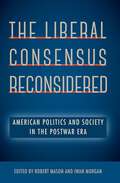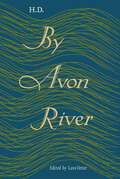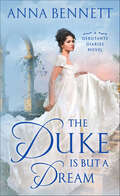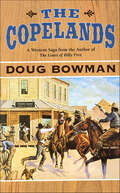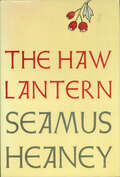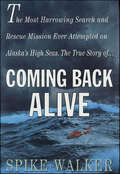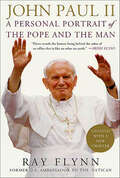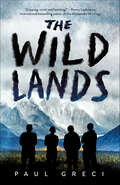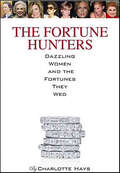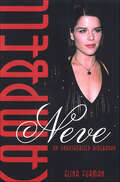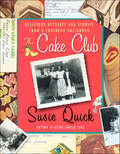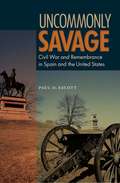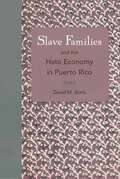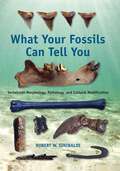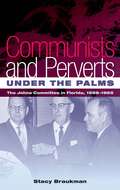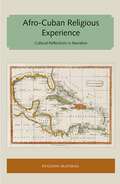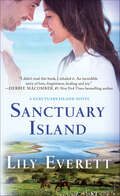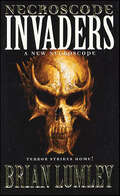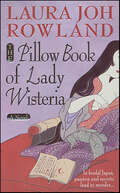- Table View
- List View
Fleeing Castro: Operation Pedro Pan and the Cuban Children's Program
by Victor Andres Triay"The first complete and comprehensive work on these important, unique programs. . . . An interesting, humane, yet tragic component of the post-1959 Cuban experience and the Cold War in general."--Antonio Benitez-Rojo, Amherst College "The ordeal began [for the children] when their parents told them they had to travel alone and that they had to keep the upcoming trip a secret. The most powerful parts of the book are their accounts. . . . Through interviews with many of the participants—the children and their parents, the coordinators of the airlift, those in the underground in Cuba and the Catholic sponsors in the United States—Triay attempts to answer many of the questions the exodus raised."--Miami Herald A stirring account of the covert effort to smuggle Cuban children into the United States in the aftermath of Fidel Castro's rise to power, Fleeing Castro brings to light the humanitarian program designed to care for the children once they arrived and the hardship and suffering endured by the families who took part in Operation Pedro Pan. From late 1960 until the October 1962 missile crisis, 14,048 unaccompanied Cuban children left their homeland, the small island suddenly at the center of the Cold War struggle. Their parents, unable to obtain visas to leave Cuba, believed a short separation would be preferable to subjecting their offspring to Castro's totalitarian Marxist state. For the children, the exodus began a prolonged and tragic ordeal--some didn’t see their parents again for years; a few never did. Until now, this chapter of the Cuban Revolution has been relatively obscure. Initially the result of an effort by James Baker, headmaster of an American school in Cuba who worked closely with the anti-Castro underground, Pedro Pan quickly came to involve the Catholic Church in Miami and, in particular, Father Bryan Walsh, who established the Cuban Children's Program, the nationwide organization that cared for those children without relatives or friends in the United States--almost half of them. The latter program, in effect until 1981, was the first to allot federal money to private agencies for child care, an action with far-reaching repercussions for U.S. social policy. Victor Andres Triay traces this story from its political and social origins in Cuba, setting it in the context of the Cold War and describing the roles of the organizations involved in Cuba and in the United States. Making use of extensive interviews with Baker, Walsh, and influential underground figures, as well as personal letters that document the fears and dreams of both the parents and the children, Triay presents this history of Pedro Pan--the largest child refugee movement ever in the Western Hemisphere--with the drama of an international thriller and the pathos of a heartbreaking family drama.
The Liberal Consensus Reconsidered: American Politics and Society in the Postwar Era
by Robert Mason and Iwan MorganWhen first published in 1976, Godfrey Hodgson’s America in Our Time won immediate recognition as a major interpretive study of the postwar era. In The Liberal Consensus Reconsidered, leading scholars—including Hodgson himself—confront his long-standing theory that a “liberal consensus” shaped the United States after World War II. These essays offer new insights into the era and diverging opinions on one of the most influential interpretations of mid-twentieth-century U.S. history.
By Avon River
by H. D."Superb. Vetter's incisive introduction offers one of the first approaches to theorizing women’s late modernist literary production as advancing specifically hybrid works located at the juncture of personal, national, and nationalist concerns."--Cynthia Hogue, coeditor of The Sword Went Out to Sea "This edition, with its finely written introduction and meticulous annotation, opens up new understandings of H.D., the major modernist writer, as she meditates, postwar, on the inner life of Shakespeare, the icon of English literature, and on the women missing from his plays. A beautiful and thoughtful book."--Jane Augustine, editor of The Gift and The Mystery H.D. called By Avon River "the first book that really made me happy." In this annotated edition, Lara Vetter argues that the volume represented a turning point in H.D.’s career, a major shift from lyric poetry to the experimental forms of writing that would dominate her later works. Near the end of World War II, after having remained in London throughout the Blitz, H.D. made a pilgrimage to Stratford-upon-Avon, Shakespeare’s birthplace. This experience resulted in a hybrid volume of poetry about The Tempest and prose about Shakespeare and his contemporaries. Featuring a tour-de-force introduction and extensive explanatory notes, this is the first edition of the work to appear since its original publication in 1949. Increasingly after the war, H.D. sought new forms of writing to express her persistent interests in the politics of gender and in issues of nationhood and home. By Avon River was one of her only postwar works to cross over to mainstream audiences, and, as such, is a welcome addition to our understanding of this significant modernist writer.
Return of Souls (A Song for No Man's Land)
by Andy RemicIf war is hell, there is no word to describe what Private Jones has been through. Forced into a conflict with an unknowable enemy, he awakes to find himself in a strange land, and is soon joined by young woman, Morana, who tends to his wounds and tells him of the battles played out in this impossible place.She tells him of an Iron Beast that will end the Great War, and even as he vows to help her find it, enemy combatants seek them, intent on their utter annihilation.Return of Souls is the second volume of the trilogy Andy Remic began with A Song for No Man's Land.At the Publisher's request, this title is being sold without Digital Rights Management Software (DRM) applied.
The Duke Is But a Dream: A Debutante Diaries Novel (A Debutante Diaries Novel #2)
by Anna BennettShe’s a secret sensation. Miss Lily Hartley is the anonymous mastermind behind the ton’s latest obsession: The Debutante’s Revenge, a tell-all advice column for young ladies. To keep her identity hidden, Lily delivers her columns disguised as a boy—which is well and good, until she lands in the middle of tavern brawl. As luck would have it, a devastatingly handsome duke sweeps in to rescue her.He has no idea who she is.Eric Nash, Duke of Stonebridge, discovers there’s a beautiful woman hiding beneath a lad’s cap, and, before long, he’s falling for the delightfully clever stranger recuperating in his house. He vows to help her find her home, even though he’s reluctant to part with her. There’s only one problem… Neither does she.Lily has no idea who she is. She could be a duchess or maid. Betrothed or married. There’s only one thing she does know—that her attraction to Nash is more than skin-deep, and it grows stronger every day. While Lily and Nash search to find her true identity, they just might lose their hearts to each other...“Fans of Regency romance authors Eloisa James, Tessa Dare, and Mary Jo Putney will go wild.” —Booklist"Deeply satisfying." - Publishers Weekly
The Copelands: A Western Saga
by Doug BowmanWhen Seth Copeland returns home to Kentucky after the Civil War, he is a different man. Having expanded his horizons during the war, he finds himself suddenly restless, his mind filled with the tales of his fellow soldiers in arms about the wide-open spaces and cheap lands of Texas. Packing up his family and earthly belongings, he sets out on a daunting trek across three states.The journey is perilous and filled with many obstacles, including fighting off cougars and sneaky mule thieves who plague the post-Civil War South. Deeper into Texas is worse, a land of fearless Comanches and ruthless bandits, but Seth and the family forge on. Certain of their belief that if they make it, they will become one of the big cattle-baron families of the Lone Star State.At the Publisher's request, this title is being sold without Digital Rights Management Software (DRM) applied.
The Haw Lantern
by Seamus HeaneyThis collection of thirty-one poems is Seamus Heaney's first since Station Island. The Haw Lantern is a magnificent book that further extends the range of a poet who has always put his trust in the possibilities of the language.
Coming Back Alive
by Spike WalkerWhen the fishing vessel La Conte sinks suddenly at night in one-hundred-mile-per-hour winds and record ninety-foot seas during a savage storm in January 1998, her five crewmen are left to drift without a life raft in the freezing Alaskan waters and survive as best they can.One hundred fifty miles away, in Sitka, Alaska, an H-60 Jayhawk helicopter lifts off from America's most remote Coast Guard base in the hopes of tracking down an anonymous Mayday signal. A fisherman's worst nightmare has become a Coast Guard crew's desperate mission. As the crew of the La Conte begin to die one by one, those sworn to watch over them risk everything to pull off the rescue of the century.Spike Walker's memoir of his years as a deckhand in Alaska, Working on the Edge, was hailed by James A. Michner as "masterful . . . will become the definitive account of this perilous trade, an addition to the literature of the sea." In Coming Back Alive, Walker has crafted his most devastating book to date. Meticulously researched through hundreds of hours of taped interviews with the survivors, this is the true account of the La Conte's final voyage and the relationship between Alaskan fishermen and the search and rescue crews who risk their lives to save them.
John Paul II: A Personal Portrait of the Pope and the Man
by Ray FlynnUnlike any other pope, John Paul II has reached out, creating dialogue or creating uproar, but always striving to unite the human community. Drawing on years of personal interaction with the Pope, and on his unique understanding of the intersection of religion and politics, Flynn, with co-authors Robin Moore and Jim Vrabel, shows how John Paul II changed the papacy, perhaps forever.
The Wild Lands
by Paul GreciTwo siblings fight to survive as they trek across the vast Alaskan wilderness in this riveting thriller.Travis and his younger sister, Jess, are trapped in a daily race to survive—and there is no second place. Natural disasters and a breakdown of civilization have cut off Alaska from the world and destroyed its landscape. Now, as food runs out and the few who remain turn on each other, Travis and Jess must cross hundreds of miles in search of civilization. The wild lands around them are filled with ravenous animals, desperate survivors pushed to the edge, and people who’ve learned to shoot first and ask questions never.Travis and Jess will make a few friends and a lot of enemies on their terrifying journey across the ruins of today’s world—and they’ll have to fight for what they believe in as they see how far people will go to survive.The Wild Lands is a pulse-pounding YA thriller full of shocking plot twists. It’s the ultimate survival tale of humanity’s fight against society’s collapse.An Imprint Book“This rugged survival story places a group of teens in a dark, burned-out post-apocalyptic nightmare. Your heart will pound for them as they face terrible dangers and impossible odds. Gripping, vivid, and haunting!”—Emmy Laybourne, international bestselling author of the Monument 14 trilogy“A compelling story that wouldn’t let me stop reading. Greci has created both a frightening landscape and characters you believe in and want to survive it.”—Eric Walters, author of the bestselling Rule of Three series
The Fortune Hunters: Dazzling Women and the Fortunes They Wed
by Charlotte HaysFrom Madame de Pompadour, the famed mistress of Louis XV, to Pamela Harriman, who married into the English aristocracy and the American plutocracy, there is a rich history of women who have found glamour and wealth in the arms of a billionaire. But contrary to what you may think, fortune hunting is no idle pursuit. Like diving for treasure, it's a real job. Some women strive to be CEOs; others prefer to wed them. You'll meet today's dazzling successes in this book.What kind of woman does it take to make the Midas marriage? Exploring the lives of the great fortune hunters of our day, reporter and former gossip columnist Charlotte Hays answers this tantalizing question. You'll learn about the South Carolina woman who took a trip around the world with a shadowy shipping magnate, only to meet and marry a philandering marquis. You'll see what methods these women use to lure their powerful men, including one playful fortune seeker who, at a very high-society soirée, hurled a piece of bread at her intended beau, starting a food fight. You'll meet the New York socialite who remarried so quickly after a divorce, her ex claimed she was a bigamist.What are their recipes for riches? Can a genuinely nice woman pursue this career? What does love have to do with it? With original interviews and photos, Hays casts a light on the determination, skill, and---yes, sometimes---ruthlessness that have shaped some of the most successful---and lucrative---unions of our time.
Neve Campbell: An Unauthorized Biography
by Elina FurmanNeve Campbell has overcome many obstacles to become one of the most powerful young players in Hollywood. Campbell's poignant story will give readers an inside look at her transformation from a complete unknown in small-town Canada to a major motion-picture star.This is the first book on the dynamic star of Party of Five, the Scream trilogy, The Craft, , 54, andWild Things. It provides insights into Neve's family life, her formative years in Canada, her nervous collapse at fourteen, her breakup with husband Jeffrey Colt, and her many amorous adventures with some of Hollywood's hottest leading men. Plus, readers will learn previously undisclosed details about the making of Scream, Scream 2, and Scream 3, and what really goes on behind the scenes of Party of Five.
The Cake Club: Delicious Desserts and Stories from a Southern Childhood
by Susie QuickHardworking. Loyal. Outspoken. Ahead of their time. Hilarious. The "Fancy Frosters" of Charleston, West Virginia, were a close-knit and devoted circle - a merry band of Southern women who got together once a month to swap recipes and stories, to cook and bake together, to celebrate friendship and have some hearty laughs...and of course to eat.Food editor and cookbook author Susie Quick's mother Emma was a member of this very special circle of sisters, aunts, cousins, and friends. Susie grew up to be a sophisticated "foodie," but she never forgot the great homemade desserts and ingenious creativity of these talented and delightful home cooks.The Cake Club collects their most prized recipes for southern desserts, along with those of Susie's other colorful friends and relatives - all presented with their original homespun flair combined with the author's modern simplicity and style. The book includes seventy-five recipes for cakes, pies, cobblers, crumbles, cookies, candies, and other treats, plus a chapter of "Lady Food" that's sure to make a lady out of any cook.From the very first recipe ("Funeral Cake") to Brown Sugar Pound Cake, Tunnel of Love Chocolate Macaroon Bundt Cake, Blackberry Bread Pudding, Emma's Molasses Crinkles, Minnie Pearl's Chess Pie, and the other treasured creations in this book, The Cake Club will entertain, inspire, and bring back memories of an earlier era. With stories like "A Good Man Really is Hard to Find" and "Driving Miss Minnie," photographs, and voices from several generations, this unique and delightful cookbook pays tribute to the healing power of friendship, shared recipes, and a delicious piece of cake.
Uncommonly Savage: Civil War and Remembrance in Spain and the United States
by Paul D. Escott“Truly impressive. Travels uncharted terrain, moving deftly through a vast scholarship in two languages. The research is sound, the prose crisp and accessible, and the subject unquestionably important.”—W. Fitzhugh Brundage, author of The Southern Past: A Clash of Race and Memory “Illuminates the enduring potency of memory in shaping postwar societies for generations after the fighting ceased, reminding us that both losers and victors often had powerful motives to remember—and to forget.”—Caroline E. Janney, author of Remembering the Civil War “Traces the dynamics of memory in the aftermath of the Spanish and American civil wars and demonstrates how similar processes of closure, willful blindness, and ideological inculcation worked out in the different contexts to produce sometimes similar but often radically different outcomes.” —Cillian McGrattan, author of Memory, Politics and Identity “With an engaging narrative and deep research, the book is a model of the benefits derived from a truly comparative study.”—David Goldfield, author of Still Fighting the Civil War Spain and the United States both experienced extremely bloody and divisive civil wars that left social and emotional wounds, many of which still endure today. In Uncommonly Savage, award-winning historian Paul Escott considers the impact of internecine violence on memory and ideology, politics, and process of reconciliation. He also examines debates over reparation or moral recognition, the rise of truth and reconciliation commissions, and the legal, psychological, and religious aspects of modern international law regarding amnesty.
Slave Families and the Hato Economy in Puerto Rico
by David M. StarkScholarship on slavery in the Caribbean frequently emphasizes sugar and tobacco production, but this unique work illustrates the importance of the region’s hato economy—a combination of livestock ranching, foodstuff cultivation, and timber harvesting—on the living patterns among slave communities. David Stark makes use of extensive Catholic parish records to provide a comprehensive examination of slavery in Puerto Rico and across the Spanish Caribbean. He reconstructs slave families to examine incidences of marriage, as well as birth and death rates. The result are never-before-analyzed details on how many enslaved Africans came to Puerto Rico, where they came from, and how their populations grew through natural increase. Stark convincingly argues that when animal husbandry drove much of the island’s economy, slavery was less harsh than in better-known plantation regimes geared toward crop cultivation. Slaves in the hato economy experienced more favorable conditions for family formation, relatively relaxed work regimes, higher fertility rates, and lower mortality rates.
Jefferson's Poplar Forest: Unearthing a Virginia Plantation
by Barbara J. Heath and Jack GaryThomas Jefferson once called his plantation Poplar Forest, "the most valuable of my possessions." For Jefferson, Poplar Forest was a private retreat for him to escape the hordes of visitors and everyday pressures of his iconic estate, Monticello.Jefferson's Poplar Forest uses the knowledge gained from long-term and interdisciplinary research to explore the experiences of a wide range of people who lived and worked there between the American Revolution and the Civil War. Multiple archaeological digs reveal details about the lives of Jefferson, subsequent owners and their families, and the slaves (and descendants) who labored and toiled at the site. From the plantation house to the weeds in the garden, Barbara Heath, Jack Gary, and numerous contributors examine the landscapes of the property, investigating the relationships between the people, objects, and places of Poplar Forest.As the first book-length study of the archaeology of a president's estate, Jefferson's Poplar Forest offers a compelling and uniquely specific look into the lives of those who called Poplar Forest home.
What Your Fossils Can Tell You: Vertebrate Morphology, Pathology, and Cultural Modification
by Robert W. SinibaldiA practical and fun identification manual for amateurs and professionals alike"Provides the beginning fossil vertebrate enthusiast with some valuable information about the fossils they are collecting."--Guy "Harley" Means, Florida Geological Survey"Illustrates how the dynamic story of ancient life and death and post-mortem utilization is accessible from the study of bone shapes. It is this very thing that made me want to be a paleontologist in the first place."--Pennilyn Higgins, University of RochesterWritten primarily for the avid amateur and beginning paleontologist, What Your Fossils Can Tell You offers both experienced and novice fossil hunters and collectors the information needed to correctly identify and interpret the significance of their discoveries.Professionals in the field may also use this book as a pictorial resource to assist them in bridging the fields of pathology and archaeology as they relate to paleontology. Amateur fossil hunters are presented with the tools they need to recognize significant finds and knowledge of how to collect vertebrate fossils responsibly and legally.Robert Sinibaldi, in informal collaboration with a number of fossil experts, has compiled materials with a wide appeal. He explains many of the complex bumps, grooves, markings, and other anomalies that occur on fossil bones and teeth. A wealth of photographs helps readers visually identify these features and apply related concepts to their personal collections. Along with many common specimens, scores of unique fossil items appear here in print for the first time.
Communists and Perverts under the Palms: The Johns Committee in Florida, 1956-1965
by Stacy BraukmanIn 1956, state Senator Charley Johns was appointed the chairman of the newly formed Florida Legislative Investigation Committee, now remembered as the Johns Committee. This group was charged with the task of unearthing communist tendencies, homosexual persuasions, and anything they saw as subversive behavior in academic institutions throughout Florida. With the cooperation of law enforcement, the committee interrogated and spied on countless individuals, including civil rights activists, college students, public school teachers, and university faculty and administrators. Today, the actions of the Johns Committee are easily dismissed as homophobic and bigoted. Communists and Perverts under the Palms reveals how the creation of the committee was a logical and unsurprising result of historic societal anxieties about race, sexuality, obscenity, and liberalism. Stacy Braukman illustrates how the responses to those societal anxieties, particularly the Johns Committee, laid the foundation for the resurgence of conservatism in the 1960s. Braukman is considered and nuanced in her stance, refusing a blanket condemnation of the extremism of a committee whose influence, even decades after its dissolution, continues to be felt in the culture wars of today.
Afro-Cuban Religious Experience: Cultural Reflections in Narrative (Florida and the Caribbean Open Books Series)
by Eugenio MatibagThe books in the Florida and the Caribbean Open Books Series demonstrate the University Press of Florida’s long history of publishing Latin American and Caribbean studies titles that connect in and through Florida, highlighting the connections between the Sunshine State and its neighboring islands. Books in this series show how early explorers found and settled Florida and the Caribbean. They tell the tales of early pioneers, both foreign and domestic. They examine topics critical to the area such as travel, migration, economic opportunity, and tourism. They look at the growth of Florida and the Caribbean and the attendant pressures on the environment, culture, urban development, and the movement of peoples, both forced and voluntary. The Florida and the Caribbean Open Books Series gathers the rich data available in these architectural, archaeological, cultural, and historical works, as well as the travelogues and naturalists’ sketches of the area in prior to the twentieth century, making it accessible for scholars and the general public alike. The Florida and the Caribbean Open Books Series is made possible through a grant from the National Endowment for the Humanities and the Andrew W. Mellon Foundation, under the Humanities Open Books program.
The Peace of Blue: Water Journeys
by Bill BellevilleThe Earth’s surface is mostly oceans, the human body is approximately 60% water, and the human imagination has been captivated by this life-giving, life-sustaining liquid from time immemorial.According to Carl Hiaasen, Bill Belleville “writes gorgeously and straight from the heart. In The Peace of Blue, the documentarian and nature writer guides you on a lyrical journey to the natural places in Florida and the Caribbean that have been forged and shaped by water. He poetically underscores the vitality of this most essential substance in our lives by showing the many ways in which water-driven landscapes nurture plants, wildlife—and the human spirit.Experience the thrill of traveling to the remote islands of Cuba and to sacred cenotes in the Dominican Republic. Contemplate the shores of Florida’s rivers and lakes and marvel at swamps and seepage slopes. Immerse yourself in the underwater world of clear, fresh springs, and dive into the deep karst caves that are worlds unto themselves.Through adventure and contemplative excursions, Belleville shares his contagious respect—and awe—for the singularity and transcendence of the natural world. We are companions in his search for a distinct sense of place, fellow journeymen in his quest to discover within the watery depths a greater awareness that informs and shapes our common identity.
Destroyer of Worlds (Fleet of Worlds Series)
by Larry Niven Edward M. LernerWorlds closer to the galatic core than Known Space are --or were--home to intelligent speciers. Some learned of the core explosion in time to flee. Destroyer of Worlds opens in 2670, ten years after Juggler of Worlds closes; with refugee species fleeing in an armada of ramscoops in the direction of the Fleet of Worlds. The onrushing aliens are recognized as a threat; they have left in their trail a host of desolated worlds: some raided for supplies, some attacked to eliminate competition, and some for pure xenophobia. Only the Puppeteers might have the resources to confront this threat--but the Puppeteers are philosophical cowards... they don't confront anyone. They need sepoys to investigate the situation and take action for them. The source of the sepoys? Their newly independent former slave world, New Terra.At the Publisher's request, this title is being sold without Digital Rights Management Software (DRM) applied.
Sanctuary Island (Sanctuary Island)
by Lily EverettSANCTUARY ISLANDLily Everett When Ella's sister decides to reunite with their estranged mother, Ella goes along for the ride—it's always been the two Preston girls against the world. But Sanctuary Island, a tiny refuge for wild horses tucked off the Atlantic coast, is more inviting than she ever imagined. And it holds more than one last opportunity to repair their broken family—if Ella can open her carefully guarded heart, there is also the chance for new beginnings. Grady Wilkes is a handyman who can fix anything…except the scars of his own past. When he accepts the task of showing Ella the simple beauties of the island that healed him, he discovers a deep sense of comfort he thought he'd lost. But now he must convince the woman who never intended to stay that on Sanctuary Island, anything is possible—forgiving past mistakes, rediscovering the simple joys of life, and maybe even falling in love.
Hitler's Art Thief: Hildebrand Gurlitt, the Nazis and the Looting of Europe's Treasures
by Susan RonaldThe sensational story of a cache of masterpieces not seen since they vanished during the Nazi terror—a bizarre tale of a father and aged son, of secret deals, treachery and the search for truth.The world was stunned when eighty-year old Cornelius Gurlitt became an international media superstar in November 2013 on the discovery of over 1,400 artworks in his 1,076 square-foot Munich apartment, valued at around $1.35 billion. Gurlitt became known as a man who never was - he didn't have a bank account, never paid tax, never received social security. He simply did not exist. He had been hard-wired into a life of shadows and secrecy by his own father long before he had inherited his art collection built on the spoliation of museums and Jews during Hitler's Third Reich. The ensuing media frenzy unleashed international calls for restitution, unsettled international relations, and rocked the art world. Susan Ronald reveals in this stranger-than-fiction-tale how Hildebrand Gurlitt succeeded in looting in the name of the Third Reich, duping the Monuments Men and the Nazis alike. As an "official dealer" for Hitler and Goebbels, Hildebrand Gurlitt became one of the Third Reich's most prolific art looters. Yet he stole from Hitler too, allegedly to save modern art. Hitler's Art Thief is the untold story of Hildebrand Gurlitt, who stole more than art-he stole lives, too.
Necroscope: A New Necroscope
by Brian LumleyThree great vampires--two Lords and a Lady--arrive on an unsuspecting Earth that teems with defenseless humans, easy prey for the marauding vampires. But humanity has defenders. Though the necroscope is gone, the psychically gifted men and women of E-Branch move swiftly against the vampire infestation. Jake Cutter is running for his life through the streets of Turin when he vanishes, appearing moments later inside the triply locked "Harry's room" in E-Branch's London HQ. Jake's dreams are very strange, filled with the voices of the dead--the Great majority, the Necroscope, Harry Keogh, even a dead vampire. He hears them all, but he doesn't truly understand.If Jake is the new Necroscope, he has to learn--fast!--how to control his powers and speak to the dead. E-Branch, with the reluctant Jake along for the ride, is about to go head-to-head with Malinari the Mind, a vampire Lord who psychic abilities are second to none.But the dead don't trust Jake, not like they trusted Harry. Jake's got personal revenge on his mind, and he's spending too much time talking that dead vampire. He's got to start thinking about the future--or he won't have one!At the Publisher's request, this title is being sold without Digital Rights Management Software (DRM) applied.
The Pillow Book of Lady Wisteria: A Novel (Sano Ichiro Novels)
by Laura Joh RowlandIn The Pillow Book of Lady Wisteria, Laura Joh Rowland once again has written a book in which "an exotic setting, seventeenth-century Japan, and a splendid mystery...make for grand entertainment" (New York Daily News). In the carefully ordered world of seventeenth-century Japan, the Yoshiwara pleasure quarter is a place where men of all classes can drink, revel, and enjoy the favors of beautiful courtesans. But on a cold winter's dawn, Sano Ichiro--the shogun's Most Honorable Investigator of Events, Situations, and People--must visit Yoshiwara on a most unpleasant mission. Within a house of assignation reserved for the wealthiest, most prominent men, a terrible murder has occurred. In a room that reeks of liquor and sex, the shogun's cousin and heir, Lord Mitsuyoshi, lies dead, a flowered hairpin embedded in his eye, in the bed of the famous courtesan, Lady Wisteria. The shogun demands quick justice, but Sano's path is blocked by many obstacles, including the disappearance of Wisteria and her pillow book, a diary that may contain clues. The politics of court life, the whims of the shogun, and interference by his long time rival, Edo's Chief Police Commissioner Hoshina, also hinder Sano in his search for the killer. Sano's wife, Lady Reiko, is eager to help him, but he fears what she may uncover. When suspicion of murder falls upon Sano himself, he must find the real murderer to solve the case and clear his name.

